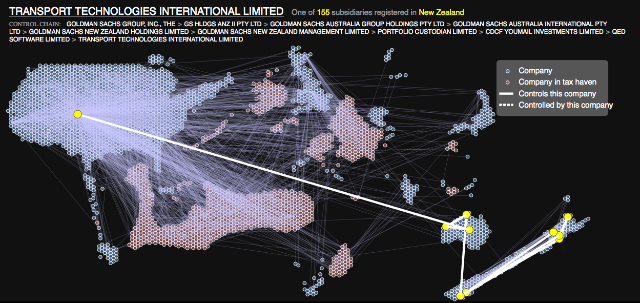Journalists and researchers are increasingly asked to understand, and interpret, vast amounts of data. Some of the most important recent public interest news stories were discovered hidden amongst complex statistics. As our understanding of the importance of data grows, so has demand for it to be made more open and accessible to academics, journalists and the public.
OpenCorporates was launched to help meet this demand. It is the Internet’s largest open database of corporate data. Chris Taggart, a former journalist who co-founded the British startup in 2010, presented his work in Rome last month, at the Personal Democracy Forum Italia (PDFI), a conference dedicated to understanding the implications of a data society. Taggart described how OpenCorporates has gathered data and information about more than 83 million companies worldwide, using original data stored in corporate registers and other similar archives.
OpenCorporates aggregates and shares this information in coherent, user-friendly formats and shares it freely online with a “share-alike attribution license”. But the startup also has a business model: if downloaded data is not to be re-used in an open format, a fee is requested.
OpenCorporates also does the “dirty work” of opening datasets up, accessing obsolete and confused archives which are often realized under non-compatible formats and are difficult to combine with other data. A good example of the OpenCorporates approach is how the startup dealt with Barclays Bank data, and its global network of subsidiary companies. In order to aggregate all the available data, OpenCorporates put together information coming from three different datasets: the New Zealand Company Register, the US Federal Reserve’s National Information Center and the US Securities and Exchange Commission’s 10-K and 20-F filings. The result is an aggregated map showing in a clear and navigable way all the ramifications of Barclays Bank on different levels.
Recently, working with Kiln, OpenCorporates launched another visualization tool which enabled the website to further map the worldwide ramifications of the six major US-based banks, highlighting their own presence – with subsidiary or controlled companies – in tax-havens, such as the Cayman Islands. Maps are interactive and by clicking on one of the knots, the connections with the central hub of the map gets highlighted. Here below, the Goldman Sachs example:
In a recent article for the Global Investigative Journalism Network website, Steven Adler said that open data is vital to democracy and its mechanisms. “Democracy is the business case for open data,” he wrote. This has been demonstrated by the way many non-governmental organisations use the OpenCorporates database. In one example Privacy International, a US non-governmental organisation working on privacy and surveillance, used the database to compile the Surveillance Industry Index, an investigation into commercial connections between companies selling surveillance software:
Check out @privacyint Surveillance Industry Index which utilises @opencorporates: https://t.co/nwzNdW91wS #PDFItaly @CountCulture
— Mike Rispoli (@RispoliMike) 29 Settembre 2014
Chris Taggart’s journalistic background is still evident in the OpenCorporates modus operandi. The company, while presenting itself as an open platform, has a clear informational aim. At #PDFItaly, Taggart also mentioned the risks involved in this kind of work. Since OpenCorporates launched, the company has received many threats, demanding it stop circulating corporate data. But OpenCorporates has a simple strategy: “stand up against the bad guys”:
#PDFItaly @CountCulture shows some of the threats the @opencorporates project received pic.twitter.com/F1gK89HPlB
— Philip Di Salvo (@philipdisalvo) 29 Settembre 2014
Photo credits: Ton Zijlstra
OpenCorporates Article translated from the original Italian by the author
Tags: Data Journalism, Digital Media, transparency













































